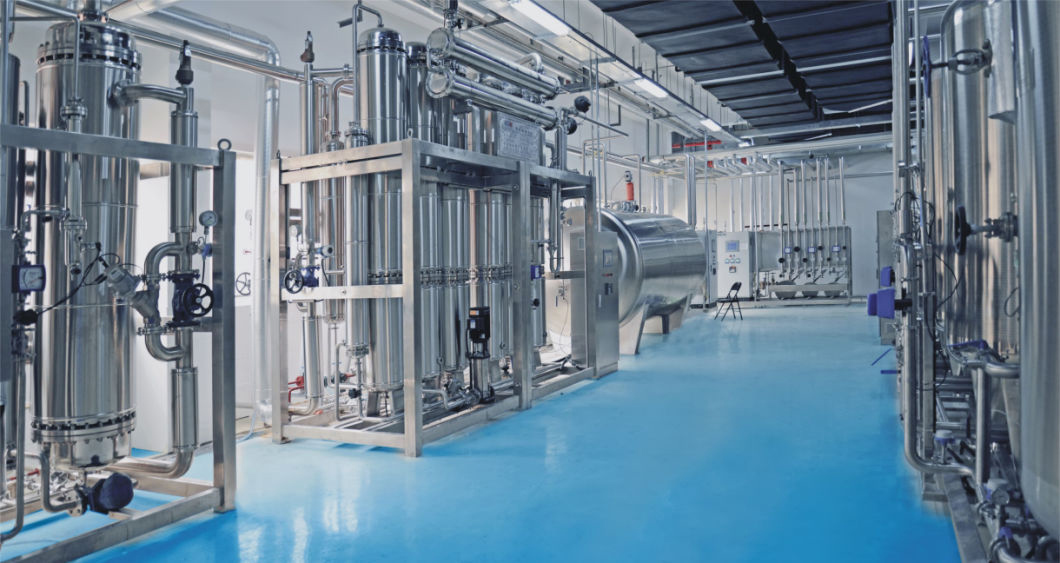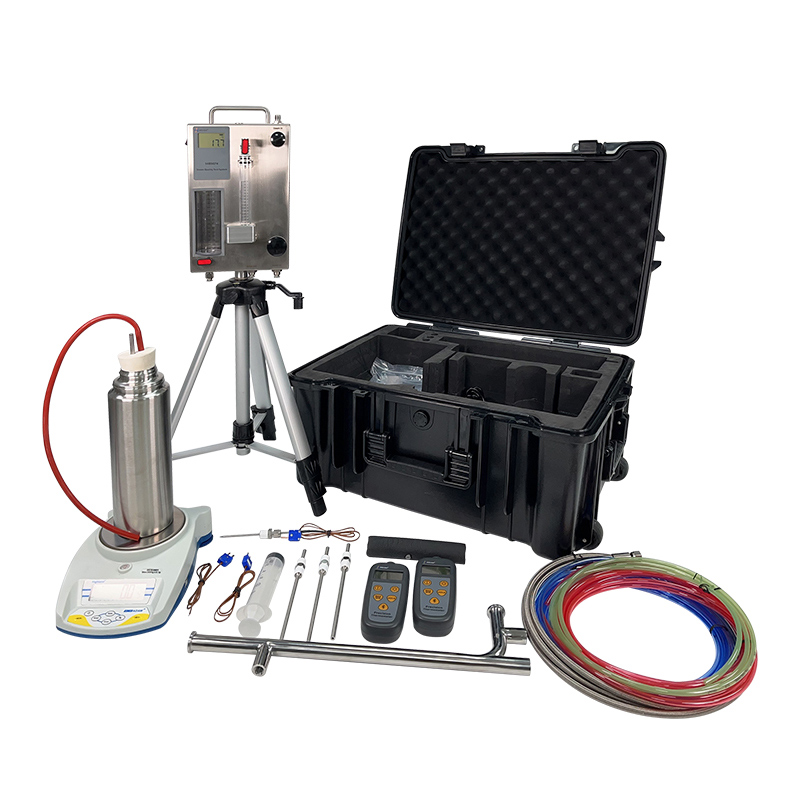When pure steam from the water system is used for moist heat sterilization, in order to ensure the sterilization effect, the pharmaceutical industry must regularly conduct three important tests on pure steam related to sterilization quality: non-condensable gas content, superheat and dryness. The standard for clean steam is dryness above 95%, condensed water meets EN285 requirements, non-condensable gas below 3.5% (specific data will vary from company to company), and the quality of pure steam condensate must meet the standards for water for injection.
Why is it necessary to test the quality of pure steam?
The logarithmic model of saturated steam sterilization assumes that there are no non-condensable gases and overheating in the saturated steam. Wet steam, superheated steam, and steam containing non-condensable gases can potentially have adverse effects on the sterilization rate of porous/solid items in the process.
1)Necessity of Dryness Testing:
The dryness of steam is calculated by measuring the relationship between the temperature change of a known amount of water and the amount of steam required to cause that temperature change. Ideally, the temperature increase is directly proportional to the amount of steam delivered to heat the water, resulting in a dryness value of 1.0, which means completely dry steam without liquid water. If the dryness is 0, it indicates 100% water.
Typically, the dryness value is less than 1.0 because there is heat loss in well-insulated piping systems. Since the dryness value at the chamber inlet may be much lower than the dryness value inside the sterilizer, it is important to measure steam dryness at both locations. The acceptance criterion for clean steam dryness (the fraction of steam relative to water - 1.0 = all steam, no water) should be at least 0.95, or 95% by weight. For laboratory autoclaves, a dryness as low as 90% is considered acceptable, however, steam with a value below this is considered wet steam.
During routine steam sterilization processes, we do not want to use wet steam because it cannot deliver as much energy to the load as saturated steam and can lead to what is known as "wet packs." The presence of moisture can adversely affect bacterial retention performance. The purpose of dryness testing is to remove droplets from packaging materials to ensure sterilization efficiency.
2)Necessity of Non-condensable Gas Testing:
Non-condensable gases (NCG) refer to gases that do not liquefy during the saturated steam sterilization process, typically air. Compared to steam, air is a poor sterilizing agent.
For example, a typical dry heat sterilization exposure phase lasts for more than two hours at a temperature of at least 160°C/320°F. Steam sterilization usually exposes for 15 minutes at 121°C/250°F or for 3.5 minutes at 134°C, and the difference in efficacy is evident. In short, non-condensable gases reduce the effectiveness of sterilization. The percentage of non-condensable gases in steam should be less than or equal to 3.5% (by volume).
3)Necessity of Superheat Value Testing:
Superheated steam refers to steam that has a temperature value above the boiling point temperature at a certain pressure. When the temperature and moisture content do not match, two situations may occur:
1) If the moisture content is higher than the temperature saturation, a wet load will occur, as described earlier.
2) When the moisture content is lower than the temperature saturation, this condition is called superheat. In a superheated condition, the steam is too dry, and its energy is too high. When the steam condenses on the load, the energy released is sufficient to melt plastic packaging or char paper packaging. Therefore, we test the superheat value of steam to avoid this situation.

Analysis of Non-compliance and Solutions
1.Non-condensable gas non-compliance may be caused by:
1) Fluctuations in Steam Pressure
Explanation: Fluctuations in steam pressure may originate from an unstable steam source, poor piping design, or imprecise control systems. These fluctuations can affect the gas composition in the steam, especially when the pressure suddenly drops, causing the gases dissolved in the steam to precipitate, increasing the content of non-condensable gases.
Solutions: In addition to testing when the steam system is unloaded, check the stability of the steam source, optimize the piping design to reduce pressure fluctuations, and ensure the accuracy of the control system.
2) Short Operating Time of the Steam System
Explanation: A newly started or short-time operated steam system may not have reached a stable state, and the impurities and gas composition in the steam may not have been completely eliminated.
Solutions: Ensure that the steam system has sufficient preheating and operating time to reach a stable state before testing.
3) Inherent Issues with Steam Quality
Explanation: The pure steam generator may have malfunctions or improper settings, resulting in steam containing excessive non-condensable gases.
Measures: Contact the equipment supplier for professional tuning and maintenance to ensure the normal operation of the pure steam generator and the quality of the steam.
2.Superheat non-compliance may be caused by:
Explanation: Superheat is usually not a problem, but if there is overheating or uneven cooling in the steam/water system, it may affect the measurement results of superheat.
Solutions: Check whether the heating and cooling equipment of the steam system is operating normally to ensure that the temperature of the steam is stable during transmission.
3.Dryness value non-compliance may be caused by:
1) Absence of Drain Valves in Steam Pipelines:
Explanation: The role of drain valves is to promptly remove condensate from steam pipelines to prevent accumulation. If not installed or if the drain valve is faulty, condensate will accumulate in the pipeline, affecting the dryness of the steam.
Solutions: Install and regularly check the working condition of the drain valves to ensure their normal operation.
2) Testing Operation Issues:
Explanation: Improper operations before testing, such as not fully venting air and condensate from the steam pipeline, can lead to inaccurate test results.
Solutions: Conduct tests according to standard operating procedures to ensure that air and condensate in the pipeline are fully vented before testing.
3) Inadequate Insulation of Steam Pipelines:
Explanation: Damaged or insufficient insulation can cause steam to cool and produce condensate during transmission, reducing the dryness of the steam.
Solutions: Check and repair the insulation layer of the steam pipeline to ensure its integrity and insulation effect.
The ZHICE-ELEC 50Ⅲ SQTK Steam Quality Testing Kit is designed for the quality testing of pure steam, ensuring sterilization efficiency.

Please Read On, Stay Posted, Subscribe, And We Welcome You To Tell Us What You Think.
Copyright @ 2024 Hefei Zhice Electronics Co., Ltd.. All Rights Reserved. Sitemap / Blog / XML / Privacy Policy
 Network Supported
Network Supported